Here, in honor of the hundredth anniversary of the General Theory of Relativity, is a very nice visualization:
here to comment or read others’ comments.
Here, in honor of the hundredth anniversary of the General Theory of Relativity, is a very nice visualization:
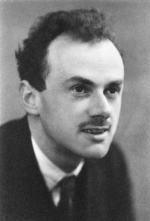 Paul A.M. Dirac was a pioneer of quantum mechanics and quantum field theory. His work pervades all of modern physics. He was, by almost all accounts, one of the top 10 physicists of all time, and by many accounts one of the top 2 physicists of the 20th century. And he’s one of my personal heroes.
Paul A.M. Dirac was a pioneer of quantum mechanics and quantum field theory. His work pervades all of modern physics. He was, by almost all accounts, one of the top 10 physicists of all time, and by many accounts one of the top 2 physicists of the 20th century. And he’s one of my personal heroes.
When Dirac was awarded the Nobel prize in 1933, he was asked to say a few words at the banquet that kicks off the multi-day Nobel celebration — and chose, against tradition, to speak about a subject other than physics. Here is Paul Dirac on the source of all our economic problems:
I should like to suggest to you that the cause of all the economic troubles is that we have an economic system which tries to maintain an equality of value between two things, which it would be better to recognise from the beginning as of unequal value. These two things are the receipt of a certain single payment (say 100 crowns) and the receipt of a regular income (say 3 crowns a year) through all eternity. The course of events is continually showing that the second of these is more highly valued than the first. The shortage of buyers, which the world is suffering from, is readily understood, not as due to people not wishing to obtain possession of goods, but as people being unwilling to part with something which might earn a regular income in exchange for those goods. May I ask you to trace out for yourselves how all the obscurities become clear, if one assumes from the beginning that a regular income is worth incomparably more, in fact infinitely more, in the mathematical sense, than any single payment? In doing so I think you would then get a better insight into the way in which a physical theory is fitted in with the facts than you could get from studying popular books on physics.
True to form, then, Dirac set an agenda that others scurried to follow — the agenda in this case being the exploitation of the Nobel prize as a license to spout economic gibberish. Almost a century later, his program continues to flourish.
Here is my talk to the University of Rochester’s Society of Undergraduate Math Students on “Truth, Provability and the Fabric of the Universe”. The audience was great, and except for a couple of slips of the tongue (like “Sir William of Ockham” for “William of Ockham”), I thought it went very well.
Faithful readers will recognize multiple themes from the book The Big Questions, and from numerous past blog posts, including:
Continue reading ‘Truth, Provability and the Fabric of the Universe’
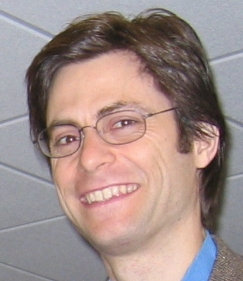 Max Tegmark is a professor of physics at MIT, a major force in the development of modern cosmology, a lively expositor, and the force behind what he calls the Mathematical Universe Hypothesis — a vision of the Universe as a purely mathematical object. Readers of The Big Questions will be aware that this is a vision I wholeheartedly embrace.
Max Tegmark is a professor of physics at MIT, a major force in the development of modern cosmology, a lively expositor, and the force behind what he calls the Mathematical Universe Hypothesis — a vision of the Universe as a purely mathematical object. Readers of The Big Questions will be aware that this is a vision I wholeheartedly embrace.
Tegmark’s new book Our Mathematical Universe is really several books intertwined, including:
Okay, Tuesday’s boxcar problem has gotten pretty interesting. I thought I knew the answer, but the comments on Wednesday’s followup post have sowed major seeds of doubt. There are a lot of excellent comments there.
I am thankful that I acknowledged in advance (at the bottom of Wednesday’s post) that I’m less sure of this one than I am of many others. I’d cheerfully bet $1000 (subject to agreement on a suitable referee) that I’m right about this relativity puzzle. (My answer is here.) And as far this old chestnut goes, my answer is here and I hereby cheerfully renew my offer to bet up to $15,000 on the outcome of a computer simulation. (Or any other amount, as long as it’s over $1000, to make this worthwhile.) Email me if you’re interested.
(This is on my mind because I’ve just had a very unpleasant encounter with a troll in another venue, who, like other trolls, is happy to bluster but runs away when you offer to put money on the line.)
For the first time ever, I am turning off comments on this post, because I don’t want to dilute yesterday’s interesting discussion by allowing it to take place half over there and half over here. Go there to participate. Many thanks to the commenters who have forced me to think harder about this, and thanks to anyone else who can help resolve the controversy.
Yesterday’s puzzle was this: A boxcar filled with water sits on a frictionless train track. A mouse gnaws a small hole in the bottom of the boxcar, near what we’ll call the right-hand end. What happens to the boxcar?
(Spoiler warning!)
I’ve just been pointed to this notice of a conference in honor of the topologist Tom Goodwillie‘s 60th birthday.
This reminded me of several things, not all of them related to the relentless march of time.
For example, once a very long time ago (though it sure doesn’t seem that way) Tom asked me a simple physics question that troubled me far more than I now think it ought to have:
A boxcar full of water sits on a frictionless train track. A mouse gnaws a hole through the bottom of the boxcar, in the location indicated here:
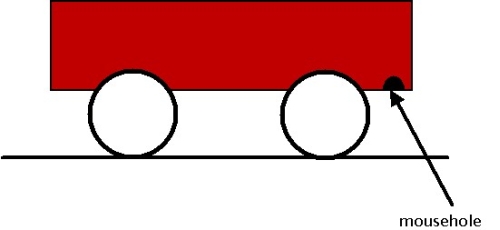
The water, of course, comes gushing out. What happens to the boxcar?
 In The Big Questions, I argued that math is all there is: The Universe we live in is a mathematical object and is no more or less “real” than any other mathematical object. Thus, for example, the Godel universe, where time moves in circles, so that everything eventually returns to the time and place where it started, is as real as our own — though far, far, less complicated, because it contains, for example, no sentient beings). (Though on the other hand, it’s entirely plausible that there exists a Godel-like Universe that does contain sentient beings, and the existence of such a Universe can, in principle, be settled by purely mathematical inquiry.)
In The Big Questions, I argued that math is all there is: The Universe we live in is a mathematical object and is no more or less “real” than any other mathematical object. Thus, for example, the Godel universe, where time moves in circles, so that everything eventually returns to the time and place where it started, is as real as our own — though far, far, less complicated, because it contains, for example, no sentient beings). (Though on the other hand, it’s entirely plausible that there exists a Godel-like Universe that does contain sentient beings, and the existence of such a Universe can, in principle, be settled by purely mathematical inquiry.)
Obviously, I can’t prove this, but I’ve tried to explain why it strikes me as far more plausible than any of the alternatives. It all comes down to Ockham’s Razor. I know these mathematical Universes exist (pick up any issue of any theoretical physics journal and chances are you’ll find a couple described in detail), and it seems ontologically extravagant to suggest that some enjoy a different kind of existence than others. In other words, the notion of “physical reality” is exactly the sort of unnecessary baggage that Ockham’s razor wants to cut away.
People do seem to want to believe that the Universe we inhabit is somehow “special”, which is why I believe they’ve invented the unnecessary concept of “physical reality” to distinguish it from all the others. But the history of science has not been kind to viewpoints that cast human habitats as special. People used to think that the earth occupied a special place in the Universe; Copernicus (crying “Give up your Ptolemy! Rise up and follow me!”) rejected that notion in what can be seen as a slick application of Ockham’s Razor. Nowadays, people are tempted to think that the Universe we occupy has a special status in the zoo of mathematical Universes; but as good Ockhamized Copernicans, we should resist that temptation.
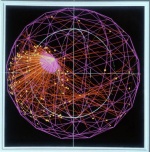 |
 |
 |
Scientists at CERN have found apparent evidence that neutrinos can travel faster than light.
Suppose that tomorrow historians at Harvard find apparent evidence that the South won the American Civil War — not in some metaphorical “they accomplished their goals” sense, but in the literal sense that it was actually Grant who handed his sword to Lee at Appomatox and not the other way around.
Question: Of which conclusion would you be more skeptical?
Of course your answer might depend on exactly what this new “apparent evidence” consists of. So let me reword: As of this moment, which do you think is more likely — that neutrinos can travel faster than light, or that the South won the Civil War?
The game of Cats and Dogs works like this: You and your teammate are placed in separate rooms and forbidden to communicate. You are each asked a randomly chosen question: Either “Do you like cats?” or “Do you like dogs?” (Each of your questions is determined by a separate fair coin flip.)
You win if your answers agree — unless you were both asked the “cats” question, in which case you win if your answers disagree.
A little reflection should convince you that if you are allowed to meet with your partner and plot strategy before the game, then the best you can do is agree to always agree — say by both always answering “yes”. That way, you win 75% of the time, and there’s no way to do better. In particular, there’s nothing to be gained by randomizing your answers.
That, at least, is true, in a world governed by the laws of classical physics and probability theory. But in a world governed by the laws of quantum mechanics — which is to say, in the world we live in — you can in principle do better. Namely: You each carry with you one of a pair of entangled “quantum coins” (actually elementary particles, but I prefer to think of them as coins, since you’re going to use them as randomizing devices).
The most fun you can have on the Internet is to find a beautiful, succinct argument with a conclusion so unexpected it seems like magic. For today’s fun, I am indebted to Michael Lugo, at God Plays Dice.
Lugo’s original post is so good it seems almost superflous to paraphrase it, but I can’t resist the temptation.
Drill a tunnel through the earth, from anywhere to anywhere — New York to Maine, or New York to Australia, or wherever else you like. Like so:
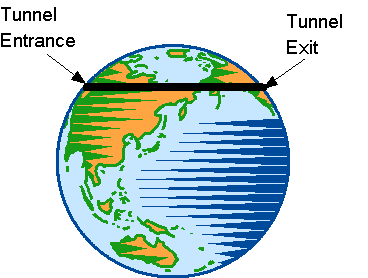
Now drop the object of your choice (Lugo suggests a burrito, but you might prefer a gravity-driven train) into the tunnel entrance and wait till it comes out the other side. It’s a standard calculus problem to calculate how long you’ll have to wait: The answer is 42 minutes, regardless of the length of the tunnel. I’m sure I once found it surprising that the tunnel length doesn’t matter, but I’ve known it long enough that I now take it in stride. So that’s not how Lugo surprised me.
The surprise is that if you change the size of the earth (while maintaining its density), the answer is still 42 minutes. Whether the earth is the size of a pea or the size of the solar system, it’s a 42 minute trip from one end of the tunnel to the other. (We’re — quite reasonably — ignoring the effects of relativity here. For an earth that was half the size of the universe, we’d have to make some corrections.)
Why so? You could, of course, discover this through a direct calculation. But Lugo provides a much slicker argument, namely:
In a research paper with seemingly tragic consequences for science fiction fans, researchers in Hong Kong have confirmed that individual photons can’t move faster than light.
(Hopes had been raised a few years back, when a pair of German physicists claimed to have broken the light speed barrier by propagating waves that effectively arrived before they departed. I said at the time that I could do just as well without all the fancy lab equipment — all I need is a yardstick and an axe. If I chop off the last 12 inches, then the center of the yardstick moves from the 12″ mark to the 18″ mark — a six inch advance in exactly zero time. Of course a sane person might argue that this six inch “advance” involves no actual forward motion, but if I correctly understood the German paper, the same sort of objection would apply there as well.)
It’s being reported that the results from Hong Kong doom all hope for time travel. That’s true or false depending on how restrictively you interpret the phrase “time travel”. Back in 1938, Kurt Goedel (yes, the great logician Kurt Godel — though this particular work has nothing to do with his work in mathematical logic) constructed an example of a universe — that is, a structure that obeys all the laws of physics as laid down by Einstein — that is completely filled with closed timelike curves. If you lived in that universe, you’d be able to travel only forward in time, but still eventually come back to your starting point in both time and space — just as a bug can go in just one direction around a circle and still come back to its starting point. Just like Groundhog Day.
 Some quick words about the mathematical universe, which is the theme of the first chapter of The Big Questions:
Some quick words about the mathematical universe, which is the theme of the first chapter of The Big Questions:
1. A “mathematical object” consists of abstract entities (that is, “things” with no intrinsic properties) together with some relations among them. For example, the euclidean plane that you studied in high school geometry consists of points, together with certain relations among them (such as “points A, B and C are collinear”). Mathematical objects can be very complicated. Mathematical objects can have “substructures”, which is a fancy name for “parts”. A line in the plane, for example, is a substructure of the plane.
2. Every modern theory of physics says that our universe is a mathematical object, and that we are substructures of that object. Theories differ only with regard to which mathematical object we happen to be a part of. Particles, forces and energy are not just described by equations; they are the equations (together with abstract, purely mathematical relations among those equations).
To understand the universe at the deepest level, we need to know not only how the universe behaves, but why.
- Why is there something rather than nothing?
- Why do we exist?
- Why this particular set of laws and not some other?
So say Stephen Hawking and Leonard Mlodinow in their book The Grand Design, and so say I.
The Big Big Question is the first one: Why is there something rather than nothing? Hawking’s answer: The laws of physics — and especially the form of the law of gravity — allow for the spontaneous creation of universes out of nothing at all. We live in one of those spontaneously created universes. But this, of course, only serves to raise a new Big Big Question, namely: Why are the laws of physics as they are? Hawking’s answer: The laws of physics must be consistent and must predict finite results for the quantities we can measure. It turns out that those criteria pretty much dictate the form of the laws of physics.
So unless I’ve misunderstood him, here is Hawking’s position: In order for us to be able to measure the things that we measure, the laws of physics must have a certain form, and in order for them to have that form, universes must be able to arise from nothing. Therefore our universe was able to arise from nothing. But this does not seem to answer the question of why things couldn’t have been very different. Why couldn’t there have been no us, no measurements, no laws of physics and no anything?
 This will be old news to the physics geeks, but I still remember what a revelation it was, back in grad school, when the physicist Gary Horowitz told me why an electric current exerts a magnetic force on a moving charged particle. (This is the source of all magnetism; those magnets on your refrigerator have little electric currents flowing through them all the time.)
This will be old news to the physics geeks, but I still remember what a revelation it was, back in grad school, when the physicist Gary Horowitz told me why an electric current exerts a magnetic force on a moving charged particle. (This is the source of all magnetism; those magnets on your refrigerator have little electric currents flowing through them all the time.)
So imagine a wire, made of protons that stay still and electrons that drift rightward; that drift is what we call a current. And imagine a nearby charged particle—call it Fred—also traveling rightward.
Now relativity tells us that Fred is allowed to think of himself as stationary, and the protons (along with you and me) as drifting off to the left. Relativity also tells us that if passengers on a moving train say the cars are 100 feet apart, then an observer at the station will say they’re closer than that. In this case (according to Fred) you and I are the passengers moving with the train of protons, and if we say they’re an angstrom apart, then Fred says they’re closer. That means Fred sees more positive charge per inch of wire than we do. If Fred himself happens to be negatively charged, he’ll be drawn toward the wire.
As far as Fred is concerned, that’s a purely electrical force, but it’s a force that you and I can’t account for on electrical grounds. So you and I call it magnetism.
At the same time, Fred sees the electrons in the wire as slower-moving, and therefore farther apart, than you and I do, so he sees less negative charge per inch of wire than you and I do. According to Fred, then, the gap between positive and negative charge in the wire is even greater, which means he’s pulled in even harder, which you and I call even more magnetism.
If you’re geeky enough to care, it’s a nice exercise in relativity theory to show that the magnetic force is proportional both to the current (that is, the number of electrons per inch, times the speed of the electrons, as measured by you and me) and to Fred’s velocity. It just now took me three tries to get this right, but it’s very nice when it finally works.
 Last week, I posed some brain teasers and a riddle about special relativity.
Last week, I posed some brain teasers and a riddle about special relativity.
The brain teasers were all solved by multiple commenters; I’ll summarize their answers at the end of this post. The special relativity problem proved trickier; here it is again:
A circular train (front of the locomotive attached to the rear of the caboose) sits on a circular track. At some point, the train accelerates and starts traveling around the track. Because the train is moving, I (an observer stationary relative to the track) should see it shrink. But the track doesn’t shrink. So the train can’t stay on the track, and gets pulled inward, ending up inside the track. On the other hand, the passengers say the track has shrunk, so they should expect to get pushed outside the track. How can everyone be right?
Now to the answer.
There are a bazillion alleged “paradoxes” in special relativity, all based on exactly the same fallacy, but I might have just invented a brand-new one—-where “invented” is shorthand for “confused the hell out of myself for a while”. When I finally got up and drew a picture (as opposed to lying in bed with my eyes closed doing something that felt like thinking), it became clear that, sure enough, it was the same old fallacy again (how could it not have been?), but in a new enough guise that someone reading this might find it amusing.
As I mentioned the other day, I’ve recently (at the direction of my old friend Deirdre McCloskey) been reading some of the work of John Polkinghorne, the physicist-turned-theologian who seems to write about a book a week attempting to reconcile his twin faiths in orthodox science and orthodox Christianity.
Although Belief in God in an Age of Science is a very short book, it is too long to review in a single blog post. Fortunately, though, much of the non-lunatic content is concentrated in roughly the first ten pages, so I’ll comment here only on those.
Polkinghorne begins in awe. He is awestruck by the extent to which our Universe seems to have been fine-tuned to support life; this is the subject matter of the much-discussed anthropic cosmological principle. To take just one example (which Polkinghorne does not mention): The very existence of elements other than hydrogen and helium depends on the fact that it’s possible, in the interior of a star, to smoosh three helum atoms together and make a carbon atom; everything else is built from there. But it’s not enough to make that carbon atom; you’ve also got to make it stick together long enough for a series of other complicated reactions to occur. Ordinarily, that doesn’t happen, but now and then it does. And the reason it happens even occasionally is that the carbon atom happens to have an energy level of exactly 7.82 million electron volts. In fact, this energy level was predicted (by Fred Hoyle and Edwin Salpeter) before it was observed, precisely on the basis that without this energy level, there could be no stable carbon, no higher elements, and no you or me.
Among the things you’re sure of, which are you surest of? For Richard Dawkins, writing in the Wall Street Journal, it’s the theory of evolution:
We know, as certainly as we know anything in science, that [evolution] is the process that has generated life on our own planet.
Now, I would be thunderstruck if the theory of evolution turned out to be fundamentally wrong, but not nearly so thunderstruck as if arithmetic turned out to be inconsistent. In fact, I can think of quite a few things I’m more sure about than evolution. For example:
1. The consistency of arithmetic. (This amounts to saying that a single arithmetic problem can’t have two different correct answers.)
2. The existence of conscious beings other than myself.
3. The fact that the North won the American Civil War. (That is, historians are not universally mistaken about this. I am not interested in quibbling about what constitutes a “win”; I mean to assert that the North won in the everyday sense of the word, as reported in all the history texts.)
Continue reading ‘What Are You Surest Of?’
In The Big Questions (pages 18-19) I talk (channeling the physicist Eugene Wigner) about the apparently unreasonable effectiveness of mathematics in revealing truths about the physical world. In Wigner’s words, “It is difficult to avoid the impression that a miracle confronts us here.”
But the physicist Peter Landsberg (no relation!) observes that sometimes the miracle runs in the opposite direction, and offers a curious use of physical reasoning to reveal a purely mathematical truth!
Continue reading ‘The Unreasonable Effectiveness of Physics’